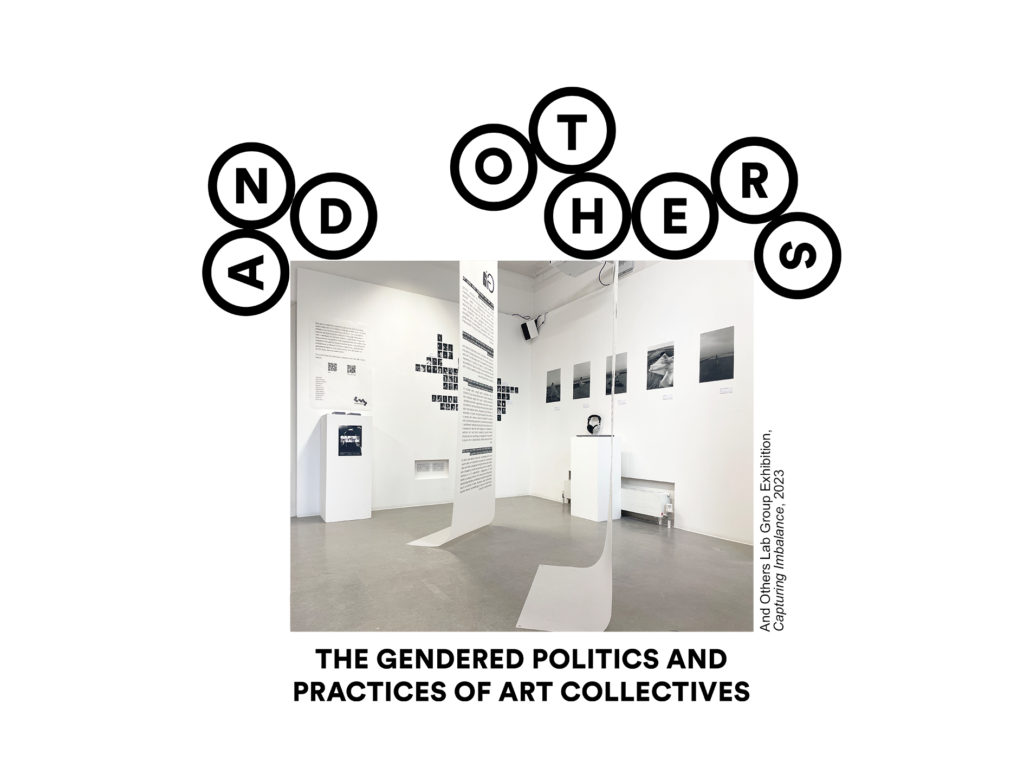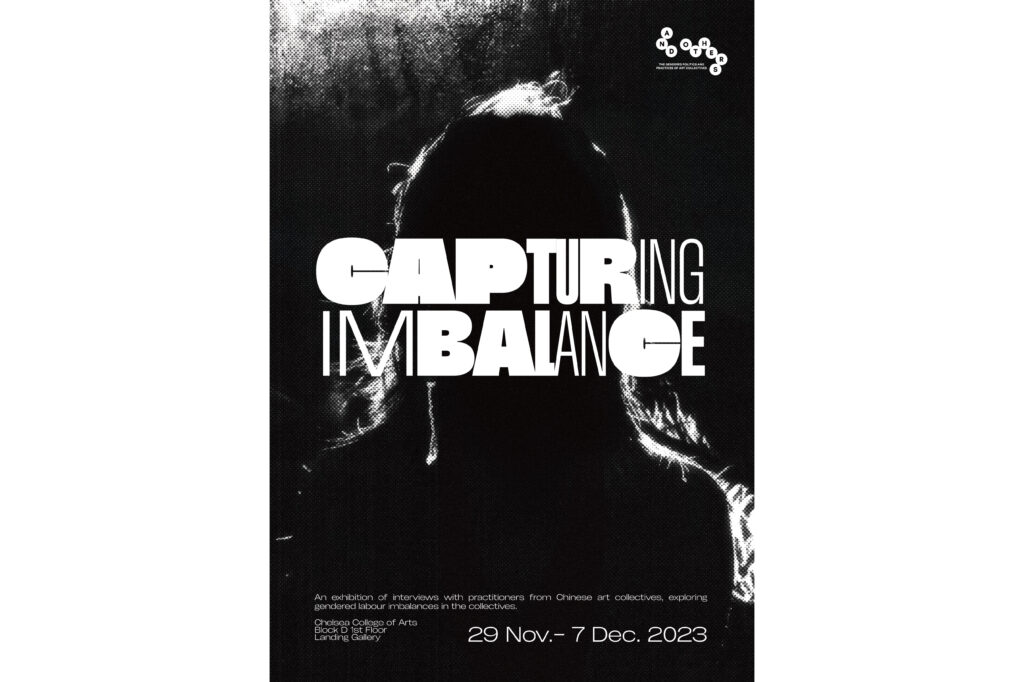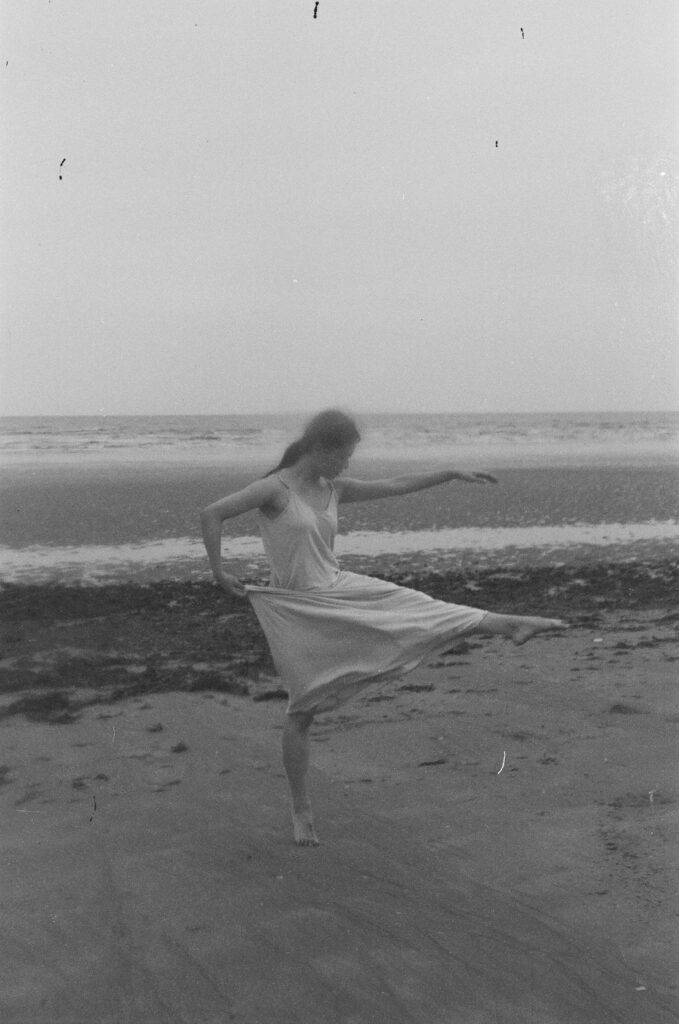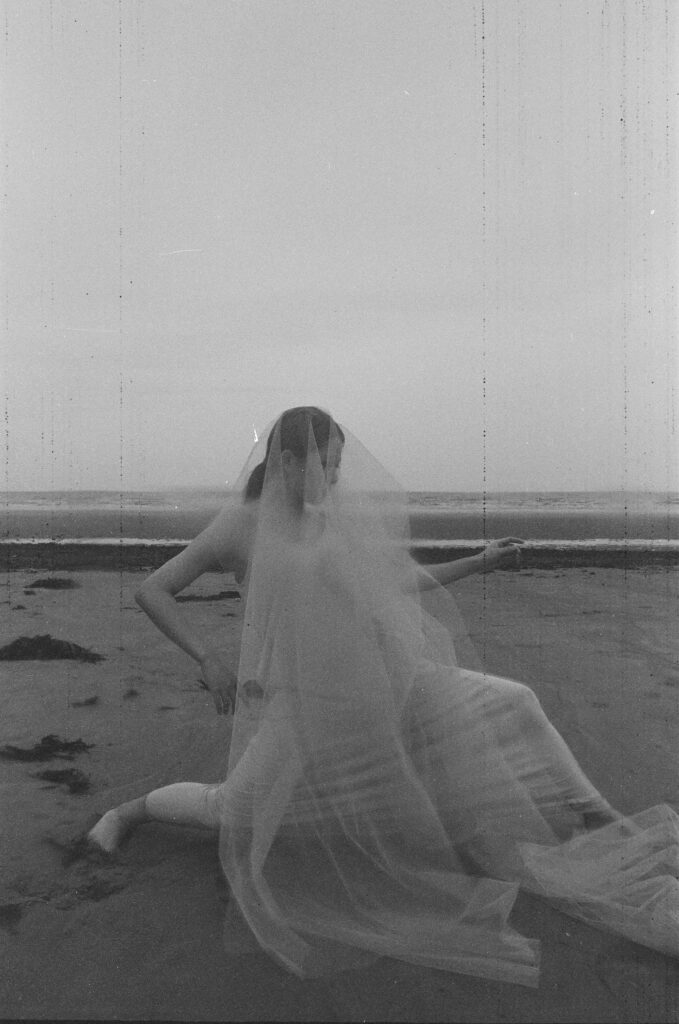This section of the website has been developed by the MA Curating and Collections student group who took part in the And Others Lab in 2023/24. It includes the 2023 And Others Lab’s group exhibition Capturing Imbalance took place at Landing Gallery, from 29th November to 7th December 2023, and related research into the exhibition, Chineseness and Gender Studies of Collectives in 85 New Movement.

And Others Group Exhibition: Capturing Imbalance
Exhibition Overview
Capturing Imbalance is a group exhibition curated by MA Curating and Collections students Yining Bai, Maria Herrero, Aayushi Laddha, Wanjing Lin, Heyue Lu, Wenyan Ma, Qinxue Shen, Jiaxin Wang, Xingcheng Xu, Xueqing Xu, Ziyan Xu and Zihan Zhou based on And Others project at Chelsea College of Arts, UAL, held at Landing Gallery, from 29th November to 7th December 2023.
And Others is a long-term research project led by Dr. Lina Džuverović, aimed at exploring labour inequalities and the position of marginalised individuals within practices of contemporary artistic collectives, while advocating for a more inclusive working approach. The research-based exhibition Capturing Imbalance, developed from this study, focuses on revealing structural barriers within the labour market of the Chinese art industry, with particular attention to inequalities related to gendered labour, emotional labour, and sacrificial labour.
Building on the above, we conducted two semi-structured interviews with Chinese artistic practitioners who work collectively — Gia and Ping Lam Lin. The exhibition centres around our curation of key texts from the interviews, as well as related works that reflect the interviewees’ responses to the theme.
In the interview, Gia mainly talked about how art institutions prefer to take advantage of women’s outer beauty and aesthetic value, exploiting them by making them wear multiple hats. She also said that despite the stereotype that women know more about the entertainment industry, the discourse is still controlled by men.
Ping Lam Lin highlighted the fact that female photographers are questioned about their professional competence in the workplace under the pretext of physical strength. As well as being assigned menial tasks and physical work because of their female identity, etc.
Although they are engaged in different fields and face different difficulties, what is in common is that they reveal the systemic inequality experienced by women who are disadvantaged by the primitive accumulation of capital in a patriarchal discourse. For example, women have always had to face greater obstacles and make more efforts in their professional development than men. Due to an imbalance of distributive power, men tend to associate women with the value of appearance, and the traditional division of labour within the household, to maintain their position of dominance. This has seriously led to the underestimation and misjudgment of women’s abilities and values.

Interview Content
After reviewing the backgrounds of Gia and Ping Lam Lin, we devised four structured interview questions through preliminary communication. These were intended to bring up a deeper understanding of the participants’ experiences and roles within their respective collectives and explore the internal dynamics of these groups, including decision-making processes, power distribution, and organisational frameworks.
By applying intersectional studies of their responses, we hope to use these foundational questions as a starting point to extend into more profound discussions within the open-ended Q&A. Whether in relation to their often-overlooked struggles within their professional journeys or the gradual disillusionment they face, their experiences collectively highlight the systemic barriers encountered by women within the creative industries.
The questions are listed below:
1. What were your expectations before joining the collective you are now part of?
2. In this collective, apart from being an artist, what would you describe as your main role within it? Can you give us an example?
3. How are the roles distributed within the collective? (Who oversees assigning roles?) And why (you or them)?
4. Have there been any instances where you have been treated differently from your male colleagues?

Interviewees
Gia
Gia(格) is an art practitioner who lives and works in Shanghai, China, working behind the scenes in theatre and researching oil paintings over a five-year period from 2018 to 2022. Towards the situation of the previous year, Gia made a gradual departure from the theatre industry owing to their disillusionment with the current state of the industry and the erosion of their ideals and passion. Then, Gia’s attention shifted toward the field of art history, with a particular emphasis on conducting research pertaining to paintings by esteemed historians within the 19th-century painting academy system.

Ping Lam Lin
Ping Lam Lin (Jenny) is a Hong Kong and UK-based photographer with a background in art. She graduated from the Beijing Institute of Fashion Technology in 2020 with a BA in Photography, and graduated from the University of Leeds in 2022 with an MA in Art Gallery and Museum Studies.
Ping Lam Lin’s photographic style is characterizedby the presentation of documentary images rooted in her senses and vision. She explores diverse experimental methods to showcase images, emphasizing the emotional interplay between images and individuals. Her thematic focus revolves around emotional expression, female growth and pertinent social issues. Through her unconventional presentation techniques, she prompts viewers to challenge preconceived notions and expand their perspectives.
A soundscape recording has been created, inspired by the work of Ping Lam Lin, to enrich the auditory dimension of the exhibition. The audio combines female murmurs and soothing water sounds, deliberately avoiding recognisable language and text. The sound production is further influenced by sociologist Edwin Ardener’s concept of the ‘Wild Zone’, which denotes the comparatively marginalised context within which women’s discourse is situated. We aimed to craft a hazy, distant soundscape that conveys a sense of powerlessness and reflects the broad dilemmas faced by women, while also suggesting the indifference of power structures towards women’s voices.

Further Study:
Chineseness and Gender Studies in 85 New Movement
In the 1980s, following China’s economic reforms and exposure to Western Enlightenment theories, the art market flourished, leading to the 85 New Movement, with over 2,250 artists forming 79 groups. However, the creative practices of female artists in this vibrant period remain under-researched. How can we re-examine the marginalised female artists’ artistic and political expressions in the context of post-colonialism and 20th-century political dynamics? In what manner were the contributions of female artists towards the conclusion of the 20th century and their narratives historically marginalised?
Read the full essay here.

Written by: Wanjing Lin, Wenyan Ma
Edited by: Yaqi Liang, Xingcheng Xu
Oct. 2024













